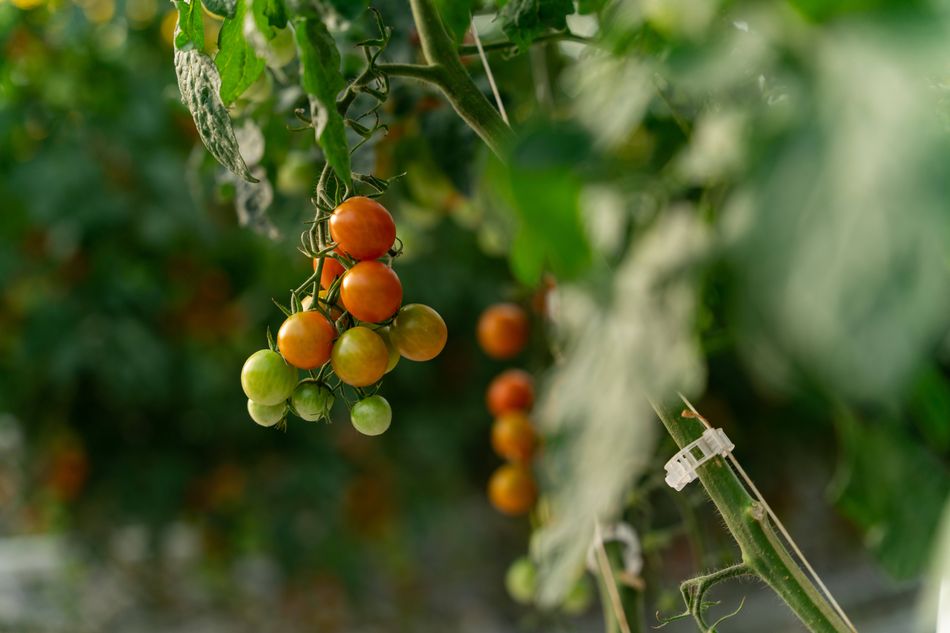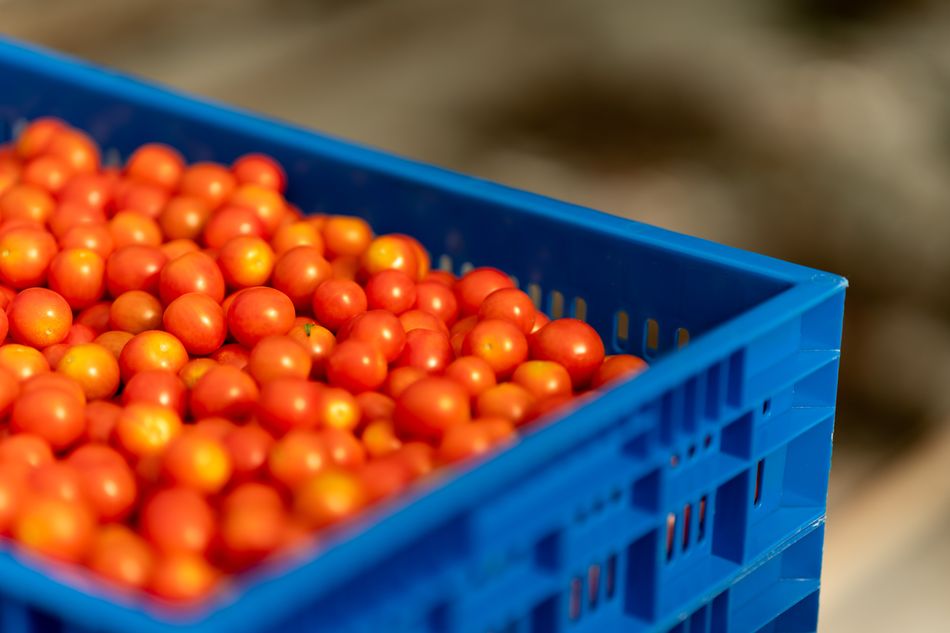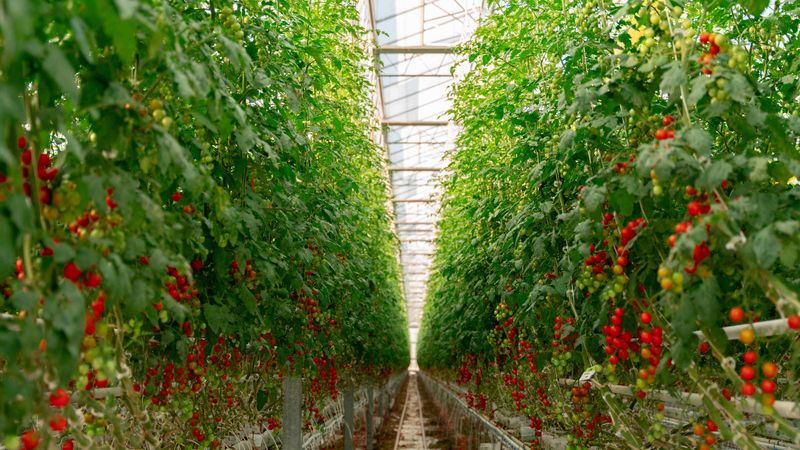Four Growers' Robotics and Computer Vision make Automated Greenhouse Harvests Reality
Revolutionizing Agriculture with AI-powered Robotic platform Solutions for Industrial Greenhouses
Introduction
In an era where the global population is rapidly growing, the importance of a robust and sustainable food production system is more critical than ever. Industrial greenhouses have emerged as a key player in this endeavor, providing controlled environments that maximize crop yields and ensure a steady supply of food. These high-tech agricultural hubs, however, are not without their challenges. This article delves into these challenges and introduces an innovative solution by a company called FourGrowers.
The Current State of Industrial Greenhouses
Industrial greenhouses have revolutionized the way we grow food. By providing a controlled environment, they enable year-round production regardless of external weather conditions. This technological advancement has made it possible to cultivate a wide variety of crops in regions where it would otherwise be impossible due to adverse climate conditions. This has significantly contributed to food security, ensuring a consistent supply of fresh produce to meet the ever-increasing demand.
However, operating an industrial greenhouse is not without its challenges. One of the most significant issues is the labor-intensive nature of greenhouse farming. Tasks such as planting, harvesting, and packing are often done manually, requiring a substantial workforce.
This is not only costly but also increasingly difficult due to a dwindling pool of agricultural workers. The labor shortage is a pressing issue that threatens the efficiency and productivity of these greenhouses.
Food Security and the Labor Shortage
The labor shortage in agriculture is a global issue. The average age of farmers is increasing, and fewer young people are entering the profession. This trend, coupled with the physically demanding nature of the work and often low wages, has led to a significant labor shortage in the industry. This shortage threatens the very heart of food security: if we cannot harvest the crops, we cannot feed the population.
Automating Food Production
One way the agricultural industry is combating the effects of the labor shortage is by increasingly automating food production. The emergence of big data and precision machines in agriculture have enabled farmers to have incredibly high resolution images of how their fields and greenhouses are performing on a variety of variables such as yield, plant health, and pest pressure.
Historically, farming has been done mainly on intuition and a natural familiarity with the plant and weather patterns, leading to over or underestimating the need of resources, or overconsumption of inputs such as fertilizer as they are applied uniformly.
Now, with the emergence of big data, highly sensitive GPS technology, and precision machines, farmers are able to leverage data like never before to produce high resolution images of their fields and greenhouses, and apply inputs specifically and precisely, to the areas that most need them.[1]
Introduction to FourGrowers
In the face of these labor shortage challenges, Four Growers has emerged with an innovative solution. Founded with the mission to provide healthy, affordable, local produce by reducing the production costs of food through robotics and analytics technology, Four Growers is poised to make a deep impact on the industry.

The Four Growers Technology Platform Solution
Four Growers provides an AI powered automation and plant analytics platform starting in greenhouse crop management that leverage these advancements in precision agriculture and software engineering. Their integrated data platform and first application in automated tomato harvesting addresses the labor shortage issue while increasing efficiency and reducing waste.
Automated Tomato Quality Checks Using Computer Vision
The centerpiece of Four Growers' technology is the GR-100, an AI powered automation and plant analytics platform with its first application in tomato harvesting. It is equipped with eight stereo cameras. These cameras allow the robot to perceive each individual plant throughout the greenhouse, identify ripe tomatoes, and carefully harvest them without causing damage.
To achieve this, the team built their own AI perception model to perceive a multitude of different aspects and characteristics in the crop and differentiate between different tomato ripeness levels. The vision processing hinges on RGB and some IR spectrums. "To date, our models have run across tens of millions of tomatoes leading to a performance that is unmatched," shares Co-founder and CEO Brandon Contino.
Ripeness is not the only quality factor FourGrowers checks for. Metrics such as sizing and shape are also collected and combined with additional hardware to determine and track fruit weights.
This level of automation and precision is unprecedented in the industry and represents a significant advancement in greenhouse technology.[2]
Automated Tomato Harvesting to Beat the Labor Shortage
The GR-100 is able to harvest tomatoes five times faster than other industry competitors, without damaging surrounding plants or foliage. The underlying engineering that enables
this competitive advantage is the combination of a novel motion planner that finds optimal collision-free paths 34 times faster than standard motion planning algorithms along with its patented end effector.[3]
Motion planning in robotics is the term for breaking down a desired movement task into discrete motions that satisfy movement constraints and possibly optimize some aspect of the movement.[4]
A motion planning algorithm would take a description of desired tasks - for example, harvesting a ripe tomato - as input, and produce the speed and turning commands sent to the robot’s “arm”. Motion planning algorithms can be applied to robots with few or many joints, the manipulation of objects, considering constraints such as speed, or direction, and uncertainty.[5]
Four Growers are able to deliver such fast solve times thanks to two main factors.
Firstly, their custom AI architecture - trained on their own proprietary dataset - provides outputs that can be leveraged to optimize the search space for their motion planning algorithm. By learning from their own data, the algorithm can intelligently focus on the most promising regions of the search space.
Secondly, their approach employs sophisticated sampling techniques that allow them to rapidly explore the pruned search space without sacrificing accuracy or optimality.
"We’ve tailored our motion planning algorithm to balance the exploration and exploitation trade-off, so we can quickly find the most time-efficient paths," Contino divulges.

The Technical Challenges of Building an Automated Harvesting Platform
In an interview with Wevolver, Contino shared the technical challenges facing him and the team as they continue to develop the Four Growers platform.
Getting the machine to recognise a tomato is just the first step to completing a successful automated harvest. The computer vision systems have to also recognise everything else. What could they hit? What could they damage? What parts of the plant are vulnerable? For example, breaking a stem, Contino recounts, might translate to 30 weeks of yield loss for the farm owner.
And then you have to make sure your hardware executes - fast.
“You can’t take 20 seconds to harvest one tomato,” says Contino. “You have to be able to execute on it quickly and get everything calibrated correctly without using extremely expensive sensors.”
The GR-100 goes one step further and integrates packing logistics into the harvesting operation - something Contino discovered would be invaluable to farmers using his harvesting technology.
“In addition to the harvesting functionality that we’ve developed, we’ve also had to develop a secondary system that handles the management of all the harvested fruit – we call this the packing cart. This allows the system to easily integrate into their existing workflow and reduces the amount of human interventions that are required with the system.”
With their tomato harvesting perfected, Four Growers is already proving their ability to go cross crop. Though not without its challenges, he shares that those have been "largely mitigated", thanks to the architectural decisions the team made early on.
By creating a well-generalized motion planner and perception architecture, as well as a modular hardware system, Four Growers doesn't face the large amount of R&D usually needed in this industry. They've built a platform that can effortlessly scale across to new crops with minimal marginal effort.
Contino also touches on the coming challenges facing the development of their analytic insights capabilities.
"As we begin to leverage more and more of the system to perform analytics insights for our customers, there are many exciting and challenging areas to focus on. From large data management and analysis, to improved botanical knowledge and classes, to modeling out complex biological systems."
What Does the Future Hold for Four Growers?
Since the commercialization of the tomato harvesting application, Four Growers has been finalizing their cucumber harvesting application. In parallel, they're building up their analytics features by adding yield heatmaps, yield forecasting, and even starting some initial work on Integrated Pest Management and disease monitoring.
At the time of writing, greenhouses are working with data on their plants and yields with - at best - row to row resolution. However, many growers still have hundreds if not thousands of plants per row.
Four Growers forecasting is arming growers with data on how many tomatoes they can plan to harvest next week down to the square meter.[6]
Not only does this enable growers to better plan their time and resources, but it gives them real-time precision data they can use to modify treatment of plants in highly specified ways across the entire greenhouse with minimal effort.
In the mid-term, Contino shares we can expect to see Four Growers bursting out of the greenhouse and onto the fields. "We're excited to start applying the same technology and platform we've developed inside greenhouses to additional crops outside the greenhouse industry."
"Greenhouses are the dominant form of growing for crops like tomatoes, peppers, and cucumbers, but there are many important crops that are not grown in greenhouses, and it's our mission to provide an AI powered automation and analytics platform that can do them all."
Conclusion
Four Growers represents a significant step forward in addressing the challenges faced by the agriculture industry. Through innovative technology and a commitment to sustainability, they are not only improving the efficiency of food production but also contributing to a more secure and sustainable future for all. As we look to the future, it is clear that companies like Four Growers will play a crucial role in shaping the future of agriculture.
References
1. Newcastle University. Precision Agriculture - Agricultural Product Systems. [Internet]. [cited 2023 Aug 17]. Available from: https://www.ncl.ac.uk/nes/our-research/agriculture/agricultural-product-systems/precision agriculture/
2. Robotics & Technology [Internet]. 2023 [cited 2023 Jul 18]. Available from: https://fourgrowers.com/products/robotic-harvesting-technology/
3. Robotics & Technology [Internet]. 2023 [cited 2023 Jul 18]. Available from: https://fourgrowers.com/products/robotic-harvesting-technology/
4. Motion planning [Internet]. 2019 [cited 2023 Jul 18]. Available from: https://robotics.umich.edu/research/focus-areas/motion-planning
5. Motion planning [Internet]. 2019 [cited 2023 Jul 18]. Available from: https://robotics.umich.edu/research/focus-areas/motion-planning
6. Kersting J. One mic stand: Brandon Contino, founder of four growers [Internet]. 2023 [cited 2023 Jul 18]. Available from: https://www.pghtech.org/podcasts/Four_Growers
For more information about Four Growers and their innovative solutions, visit their website. Their platform provides a wealth of information about their technology, their mission, and their vision for the future of agriculture.

